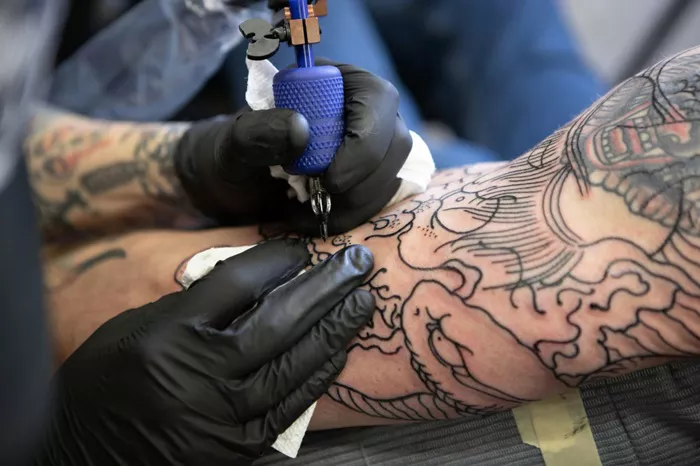Tattoos have long been a unique form of self-expression, offering individuals a permanent canvas to tell their personal stories. Whether you’re considering a full sleeve or a minimalist design, understanding the tattoo process—from initial design to aftercare—is essential. To gain a deeper insight, we spoke with two expert tattoo artists from 9Lives Tattoo Studio about the steps involved in getting a tattoo and the factors that influence the outcome.
Step 1: Choosing the Design
The journey to getting a tattoo begins with deciding on a design. For those with creative inclinations, sketching a design can add a personal touch, but many clients prefer to leave the concept to the professionals. Jezreel James Noel, a tattoo artist at 9Lives Tattoo Studio, explains, “When working on a design, I try to learn as much as I can about my clients to create something that truly represents who they are.”
While it’s essential to know what you want before starting, Noel suggests that if you’re unsure, a conversation can be a helpful starting point. “I encourage clients to talk about their personality. Tell me who you are, and I can help craft something that suits you perfectly.”
Tattoo artists also advise clients to keep practicality in mind. Detailed designs often don’t work well with small tattoos, as fine lines may blur and lose their clarity over time. Additionally, placement is crucial. “Clients often see a tattoo on Pinterest and want something similar, but the placement they have in mind may not be ideal,” says Camille, another artist at 9Lives Tattoo Studio.
Step 2: Selecting the Right Artist
Once you’ve settled on a design, the next step is finding the right artist. It’s important to choose an artist whose style aligns with your vision. Tattoo artists typically specialize in specific techniques—some excel in neotraditional designs, while others focus on hyper-realistic styles. “Although all tattoo artists are talented, we each have our own distinct style,” Camille explains.
Artists also have certain boundaries when it comes to the designs they will create. Noel, for example, does not tattoo the names of significant others, citing the emotional risk involved. “I know the potential consequences, so I prefer not to do it just for the money,” he explains.
Step 3: Physical and Mental Preparation
Before you get inked, physical preparation is key. Adequate sleep, hydration, and a good meal beforehand are essential to stabilize your blood sugar and reduce discomfort during the session. “How a tattoo feels depends on the individual,” Noel says. “Some people don’t experience pain during the process but may feel faint due to anxiety or the sensation.”
This preparation also provides an opportunity to address any lingering doubts. Camille reminds clients, “A tattoo is permanent. It will stay on your skin forever, so you need to be absolutely certain about the design and placement.”
Step 4: The Tattoo Process
Getting a tattoo can feel similar to a long visit to the hairdresser or nail salon, though with a bit more pain involved. Once you’re in the chair, you’ll likely spend several hours talking with your artist. Keeping the conversation flowing can ease your nerves and make the process more comfortable. It’s important to communicate any discomfort or anxiety. “The relationship between client and artist is very interactive,” says Noel. “It’s an intimate art form, and I want to ensure that my clients are satisfied with their tattoos.”
He adds, “Tattooing can be painful, and some people may feel faint but don’t speak up. It’s my job to check in with them regularly to ensure their comfort.”
Step 5: Aftercare
Perhaps the most crucial part of the tattoo process, aftercare plays a significant role in how well your tattoo heals and looks over time. A fresh tattoo is essentially an open wound, so proper care is necessary to avoid infection and ensure that the design remains sharp.
Following the session, artists typically cover the tattoo with a plastic film to protect it, and provide ointment for moisturizing. Noel recommends washing the tattoo with lukewarm water and unscented soap to prevent infections. “Keep the tattoo clean and moisturized, and avoid submerging it in water until it fully heals,” he advises.
To preserve the tattoo’s vibrancy, it’s important to keep it out of the sun for a few weeks. Camille emphasizes, “The healing process is just as important as the design itself. Following aftercare instructions will help the tattoo stay looking its best.”
Conclusion
Getting a tattoo is more than just a decision to ink your skin; it’s a thoughtful process that involves careful planning, collaboration with your artist, and proper aftercare. By understanding the steps involved and preparing accordingly, you can ensure that your tattoo becomes a lasting and meaningful piece of art on your body.
Related topics:

